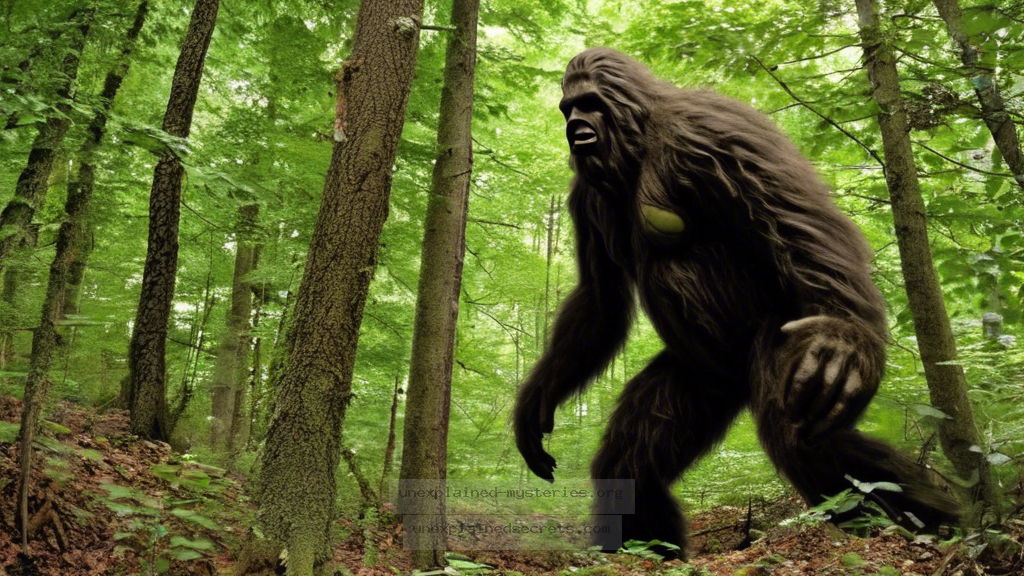What Does the 1978 Bigfoot Encounter in the Blue Ridge Mountains Reveal About Sasquatch Behavior?
What Does the 1978 Bigfoot Encounter in the Blue Ridge Mountains Reveal About Sasquatch Behavior?
The mystery of Bigfoot has captivated the public imagination for decades, but few incidents are as compelling as the 1978 encounter in the Blue Ridge Mountains of North Carolina. This particular case offers a wealth of insights into the behaviors, habitats, and myths surrounding Sasquatch. Unraveling the details of this encounter not only gives us a glimpse into the elusive nature of this cryptid but also raises questions about the scientific investigations surrounding it. This post delves into the historical context, core theories, practical implications, and more, shedding light on the enigma of Bigfoot.
Historical Context of Bigfoot Sightings
The legend of Bigfoot can be traced back to Native American folklore, with various tribes across North America recounting stories of large, hairy beings dwelling in the forests. The term “Sasquatch” itself is derived from the Salish word “sásq’ets,” which refers to a wild man or hairy giant. Recorded sightings began in earnest during the 19th century, and by the 1950s, public interest surged, catalyzed by reports and alleged photographic evidence, such as the infamous Patterson-Gimlin film of 1967. The 1978 encounter in the Blue Ridge Mountains is part of this rich tapestry of sightings and experiences.
The 1978 Encounter: A Detailed Overview
In the late summer of 1978, a group of hikers in the Blue Ridge Mountains reported a startling encounter with what they believed to be a Bigfoot. The group, consisting of five members, was camping near a secluded area when they heard strange sounds emanating from the woods. Descriptions of the noises varied but included deep growls and wood-knocking sounds, which are often attributed to Bigfoot behavior. The hikers later reported seeing a large, upright figure moving through the trees at a distance, prompting a mixture of fear and fascination.
Core Theories About Bigfoot Behavior
One of the most intriguing aspects of the 1978 encounter is the behavior exhibited by the creature. Researchers and cryptozoologists have proposed several theories that may explain the actions of Bigfoot. The most common theories include:
- Territoriality: Bigfoot may be highly territorial, leading to aggressive behaviors when humans encroach upon their habitats.
- Social Structure: Some theorize that Sasquatch operates in family units, explaining the varied vocalizations and interactions reported by witnesses.
- Camouflage Techniques: The creature’s ability to blend into its environment may contribute to its elusiveness, making sightings rare.
Practical Evidence and Documentation
One of the challenges in studying Bigfoot is the lack of concrete evidence. The 1978 encounter is no exception, as the hikers did not capture any photographs or physical evidence of the creature. However, they did document their experience through written accounts and testimonies. These narratives have become part of the larger body of evidence supporting the existence of Bigfoot.
Researchers often analyze similar encounters to identify patterns and behaviors. For instance, the use of audio recorders in areas with high sighting reports has become a common practice among cryptozoologists. Some enthusiasts have recorded sounds they believe to be associated with Bigfoot, which adds another layer of complexity to the investigation.
Alternative Perspectives on Sasquatch
While many enthusiasts firmly believe in the existence of Bigfoot, skeptics argue that the lack of physical evidence—such as bones or definitive photographs—casts doubt on the validity of sightings. Some propose that many Bigfoot encounters can be attributed to misidentification of known animals, such as bears or large primates. Others contend that the phenomenon of “mass hysteria” could explain the shared experiences reported by groups, like the hikers in 1978.
Common Misconceptions About Bigfoot
Several misconceptions surround the Bigfoot phenomenon that can cloud the investigation. Here are a few:
- Bigfoot is just a myth: Many dismiss the creature as a mere legend; however, numerous credible eyewitness accounts exist.
- All sightings are hoaxes: While some have been proven fraudulent, many are from reputable witnesses.
- Bigfoot is always aggressive: Most accounts describe the creature as avoiding human contact, suggesting a more timid nature.
Best Practices for Investigating Bigfoot
For those interested in exploring the mystery of Bigfoot, there are several best practices to keep in mind:
- Research Thoroughly: Familiarize yourself with historical sightings and credible reports.
- Document Everything: Keep detailed notes of your experiences, including locations, dates, and times.
- Use Technology: Employ audio recorders, cameras, and other equipment to gather evidence.
- Respect Nature: Always practice ethical wildlife observation and avoid disturbing natural habitats.
Future Developments in Bigfoot Research
The search for Bigfoot continues to evolve with advancements in technology and methodology. Recent developments include the use of environmental DNA (eDNA) sampling, which allows researchers to collect genetic material from the environment. This technique has the potential to identify unknown species in remote areas, including the possibility of discovering Sasquatch DNA if it exists.
Moreover, the rise of social media has facilitated the sharing of experiences and evidence among enthusiasts and researchers. Online platforms allow for real-time discussions, fostering a community dedicated to the investigation of Bigfoot.
Conclusion: The Ongoing Mystery of Bigfoot
The 1978 encounter in the Blue Ridge Mountains serves as a fascinating case study that encapsulates the complexities of Bigfoot research. While skepticism remains, the accumulation of eyewitness accounts and evolving investigative techniques keeps the mystery alive. The study of Sasquatch is not merely about searching for a creature; it’s about understanding the human fascination with the unexplained and the natural world.
As we continue to probe this enigma, it becomes clear that the quest for Bigfoot is as much about the journey as it is about the destination. Whether or not Sasquatch exists, the stories and experiences surrounding it enrich our understanding of the wild and the mysteries it holds.
Other Articles
Recent Posts
- What Happened to Flight MH370? The Conspiracy Theories That Still Haunt Us
- What Secrets Lurk Within the Walls of the Infamous Trans-Allegheny Lunatic Asylum?
- What Evidence Supports the Existence of Bigfoot in the Pacific Northwest?
- What Happened to the Indus Valley Civilization? Unraveling the Mysteries of Ancient Urban Life
- Can Telepathy Be Scientifically Proven Through Laboratory Evidence?







